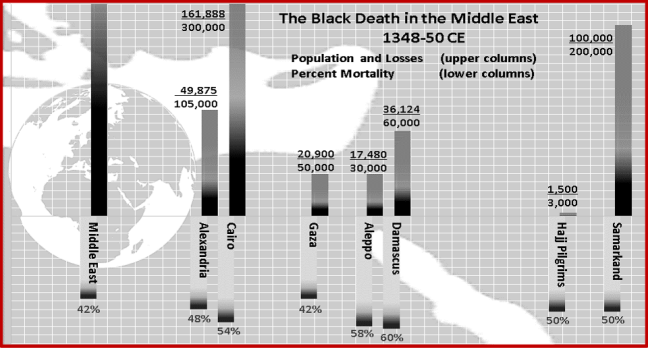Prof. Borsch’s Research on Black Death Recalculates Death Toll Using Previously Unpublished Research

How Can New Findings Relative to the Plague be Applied to COVID-19?
Assumption University History Professor Stuart Borsch, Ph.D., recently penned an essay that has been included in Harvard University’s Islamic Law Blog, a publication supported by the Islamic law program in Harvard’s Law School that is dedicated to promoting research and providing resources for the academic study of Islamic law. Prof. Borsch’s essay is part of the blog’s Pandemic Roundtable project, a compilation of essays that discuss the impact of global pandemics on Islamic history and thought. His essay “The Black Death in the Middle East and Central Asia” analyzes the mortality and transmission of the plague and a re-examination of past data associated with both factors.
Through his research, Prof. Borsch addresses several questions about the Black Death, also known as the bubonic plague, including the disease spread throughout the Middle East and Central Asia. The essay stemmed from his current research project in which he and a colleague are analyzing the Middle East’s Black Death mortality more generally, including providing a new and more detailed timeline for 1345-1349 CE, when the plague (Yersinia pestis) was transmitted from Central Asia to Europe and the Middle East.
“We are using unpublished manuscripts from five to six centuries ago, manuscripts which have not been brought to life before,” said Prof. Borsch. “These manuscripts are providing us with fresh and original information/data that allows us to estimate the mortality for regions such as Central Asia – for which the scholarly world has never had any data. The book project does more than study the Black Death – it also covers the entire history of the second plague pandemic in the Middle East and Central Asia (1345 CE – 1877 CE) and analyzes the demographic and economic impact of the series of plague outbreaks (~ 150 substantial outbreaks over this ~ 500 year interval) that had a serious demographic and economic impact upon the Middle East and Central Asia.”
Prof. Borsch is the author of numerous essays concerning the Black Death and other pandemics, as well as his book, The Black Death in Egypt and England: A Comparative Economic Analysis. In this book, Prof. Borsch describes the economic structures and cultures of Egypt and England before, during and after the Black Death. Its focus is on why the Black Death stunted the economic and technological growth of early modern age Egypt while Western civilizations experienced the opposite.
Concerning the current COVID-19 global pandemic, Prof. Borsch warned, “When it comes to applying lessons from the Black Death to our present day pandemic, one thing is clear: the Black Death plague outbreak should be a warning to us all. This is because, as bad we think our experience with COVID-19 may be, we all need to be informed and reminded of just how much worse it could be; and by that I mean how much worse a new pathogen might well be. And in this sense, the Black Death is a warning for the present telling us that we need to be very concerned about world pandemics – and bear these pandemics in mind when it comes to planning for the future.”
He added that while we think about the future, the comparison with the Black Death is an invitation to think about the differences between then and now. While the Black Death was far worse, killing 50 percent of the global population in the span of the year, there are some surprising similarities with today’s global pandemic. Like Yersinia pestis, the novel coronavirus (SARS-CoV-2), was rapidly transmitted across long-distances.
“Even though our COVID-19 has a case fatality rate that is vastly lower than that of bubonic, pneumonic, and septicemic plague, the Black Death’s pathogen nevertheless moved through the globe in a way that is of course all too familiar to us today,” explained Prof. Borsch.
He added that like our present-day virus, the Yersinia pestis bacterium was in essence something new and we should be cognizant of how lethal and threatening a new pathogen species can be, and ready for the next species jump and alteration of the virus.
“We urgently need to devote more resources, take proactive steps, and plan out precautionary measures for combating the future pathogen,” he said, adding that we need to be cautious and prepared for what comes next when going back to business as usual. “One hopes that soon we will have a vaccine and it won’t be long before we can put this experience behind us.”
